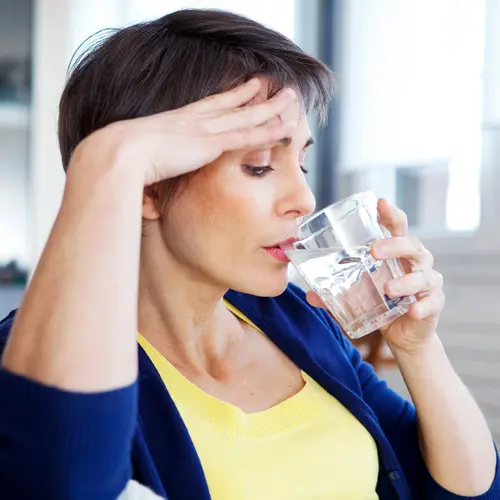What Are the Treatments for Menopause?
After menopause, hormone replacement therapy (HRT) is often prescribed to resupply the body with the hormones it no longer produces. Discuss this with your doctor. As with any medication, there are risks and benefits, and women should decide if HRT is the right choice for them.
HRT typically consists of an estrogen/progestin supplement -- usually given orally or through a skin patch or gel. Estrogen is the component that helps treat vaginal dryness, osteoporosis (thinning of the bones), and vasomotor symptoms (VMS) such as hot flashes and night sweats.
Estrogen alone can increase the risk of endometrial or uterine cancer -- since it stimulates cell growth -- but progestin counteracts that risk. However, progestin and estrogen both have negative side effects like irregular bleeding, headaches, bloating, and breast swelling and pain. You may even develop an artificial monthly period, depending on the dosage you're on.
Estrogen may be used alone in women who have had a hysterectomy.
Recently, research on HRT through the Women's Health Initiative turned up some controversial findings: Heart attacks, strokes, blood clots, and breast cancer happened more often in women taking combination HRT. Taking estrogen alone slightly increased the risk of stroke and blood clots and didn't appear to increase or decrease the risk of heart disease. No increased risk of breast cancer was found for those women on estrogen-only therapy.
Alternative Treatments for Menopause
As an alternative treatment for menopause symptoms of the vagina, your doctor may prescribe a vaginal cream to help stop the thinning of vaginal tissues and improve lubrication.There are estrogen-based creams and a non-estrogen cream called Intrarosa (prasterone) that reduces the severity of pain with intercourse as a result of thinning vaginal tissues.
Your diet can also help you get through menopause:
- Eat foods high in plant estrogens -- such as soybeans and soy milk. Some research suggests soy may ease symptoms such as hot flashes. Other research shows it may raise the risk of cancer in women who have a uterus. Nuts and seeds, fennel, celery, parsley, and flaxseed oil may also help.
- Raise your calcium intake -- to 1,000 to 1,500 mg a day -- and do regular weight-bearing exercise to avoid osteoporosis and maintain general good health.
- An extract of black cohosh is thought to reduce symptoms without causing the problems associated with estrogen. However, this herbal supplement may cause side effects including stomach upset, cramping, and headaches. There is also some concern that black cohosh may be associated with liver damage.
It is important to understand that there is little scientific evidence regarding the effectiveness of these alternative treatments.
Regular exercise can help minimize the symptoms of menopause and maintain overall good health. Yoga, meditation, deep breathing and other relaxation techniques can reduce the stress of menopause. It’s also a good idea to finally kick any old, unhealthy habits, such as smoking or drinking too much alcohol.
Other interventions that may be helpful are to dress lightly and in layers and avoid potential triggers like caffeine and spicy foods.

